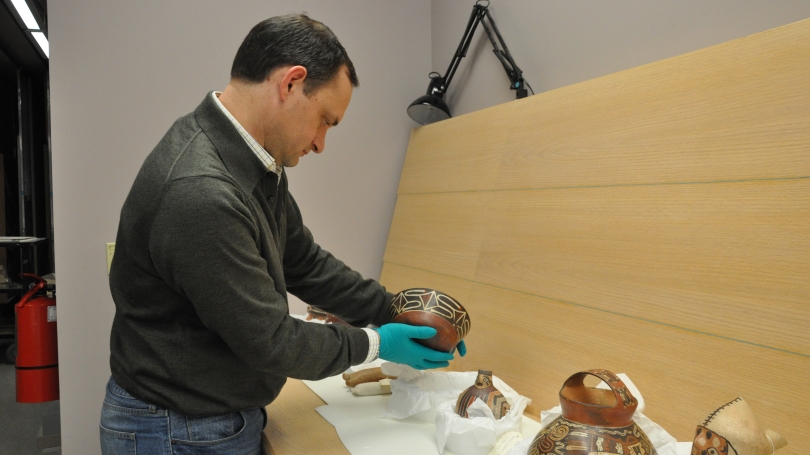Hood Quarterly, spring 2013
Alan Covey, Associate Professor of Anthropology
We live in an unequal world, where individuals can experience vast differences in wealth, power, and quality of life. The Western philosophical tradition offers accounts of the human ascent to the state of "civilization"—or descent into modern decadence—but the actual development of inequality in its many forms occurred long before the advent of writing and far from the academies and salons of ancient and modern Europe. The origins of inequality lie in the realm of archaeology, and my new course, Anthropology 57: The Origins of Inequality, uses the material remains of ancient human behavior to confront the flaws and biases of our theoretical and ideological expectations. Students will read selections from classic texts—such as Aristotle, Rousseau, and Engels—and then discuss the material evidence for inequality at key moments in the human trajectory. In doing so, it will become clear to them that archaeological evidence is often ambiguous and fragmentary, leaving ample room for political philosophies and ideologies to weave convincing and confident narratives both around and in spite of it.
Thanks to a Mellon Residency Fellowship at the Hood Museum of Art, I spent two weeks at the museum in November 2012, working with the collections to develop a unique learning opportunity for the students in my class. I focused primarily on pre-Hispanic materials from Andean South America, the region where I conduct my primary fieldwork, but my extended time at the museum also permitted me to become acquainted with other areas of the Hood collections that have strong potential for teaching Dartmouth students.
Although my recent stint in the museum will enrich all of the classes I am teaching this year, I am particularly excited by the opportunity to work with my Anthropology 57 students to curate an exhibition on the material representations of inequality that will be on view in the Hood's Harrington Gallery this spring. As they discuss and debate the relationship between archaeological evidence and Western explanations of inequality, my students will work in the Bernstein Study-Storage Center, studying a global array of archaeological and ethnographic pieces that I have chosen from the collections. They will be challenged to consider whether an object itself can reveal the uneven landscapes of power and status in the society that made and used it. Working collaboratively, they will identify groups of objects that help them to construct a critical narrative about a particular kind of inequality. Student groups will select the objects to be displayed, and they will research each piece, consulting with me and with museum staff to address the intellectual and aesthetic challenges of a small museum installation.
Creating the exhibition will give students a unique vantage point from which to consider how objects can serve as mnemonics for constructing narratives about the human past. This in turn should help them to consider how disciplines like archaeology and institutions like museums can reinforce—or challenge—received wisdom about the origins and perpetuation of inequality.
